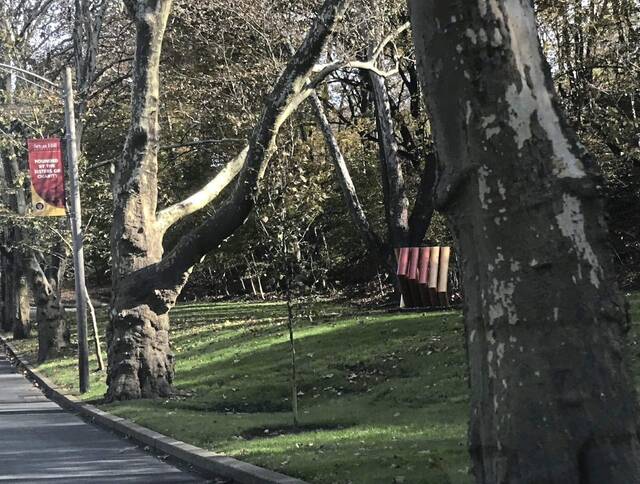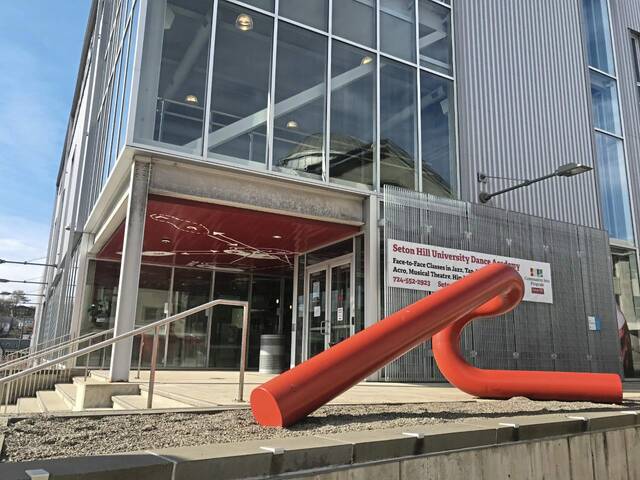Lining the roadway leading up to Seton Hill University, a red and orange sculpture peeks through the trees, greeting those visiting the Greensburg campus.
A second sculpture, painted solid red, is more prominently placed at the Seton Hill Arts Center, seen by those traveling through the intersection of West Otterman Street and Bell Way.
The pieces are part of a series scattered across Westmoreland and Allegheny counties. They were created by the late artist Josefa Filkowsky who taught at Seton Hill from 1955 until her death in 1999. For the school’s arts department, displaying the pieces to not only students and staff but to members of the public show university priorities.
“Seton Hill does promote the arts, and a lot of smaller universities may have some classes or a studio or two, but the fact that it is all over campus, it affirms what it is that we value,” said Maureen Kochanek, an assistant professor of art history.
The first piece located at Seton Hill is “Pipe Dreams,” now placed in front of the arts center. Featuring a single pipe, the steel sculpture was constructed in 1969. It originally was located on the university’s main campus in a grove of pine trees, said Pati Beachley, an art professor and chair of the Art and Design Department.
Beachley said, officials decided to restore and move the piece when the arts center opened in 2015.
At the time, George Hritz was hired to restore the piece.
“I’m an admirer of Josefa Filkowsky’s work, and the sculpture did need some attention. … It had been moved around a little bit, damaged slightly, it was corroded,” Hritz said. “Pati had the vision to recognize how much better it would look down here. It would be more a part of the community, be more visible and represent Josefa’s art.”
The piece was moved into its current location in November 2020.
“Pipe Theme in Red Orange,” the sculpture located along Seton Hill Drive, previously sat in front of Lynch Hall. The aluminum piece has 10 pipes in various hues of red and orange.
The sculpture has a storied history on campus. In 2011, it became a point of controversy when it was repainted blue and gray after the Lake Erie College of Osteopathic Medicine revealed a pre-osteopathic medicine program at Lynch Hall. University leaders decided the red and orange clashed with the school’s official blue color.
The change, however, quickly was met with push back from alumni, students and art experts.
“It was controversial. The alums did not like it,” Beachley said. “It does say ‘Pipe Theme in Red Orange’ in the title, so it was a conundrum.”
Beachley said a student who was hired to paint the sculpture blue and gray was rehired to paint it in its original colors.
The sculpture was moved to its new location in 2012.
“I think the end result was the sculpture got more attention and a more prominent space, so that’s a win,” Beachley said.
For Kochanek, the sculpture’s new location is a symbol of Filkowsky herself.
“She always took care of everyone and everything, so I almost see that like she’s standing there with her hands on her hips, like, ‘What’s going on?’ It really has presence, just like she always had presence,” Kochanek said.
Two other pipes pieces are located in the region. One is at The Westmoreland Museum of American Art. The other sits near Gateway Center in Downtown Pittsburgh.



